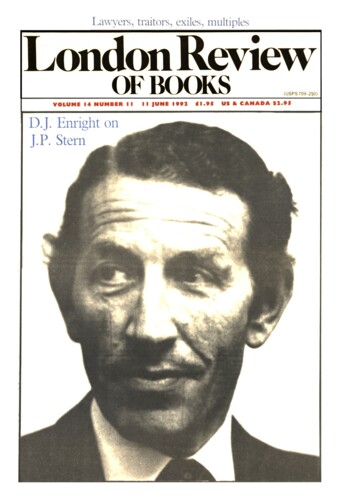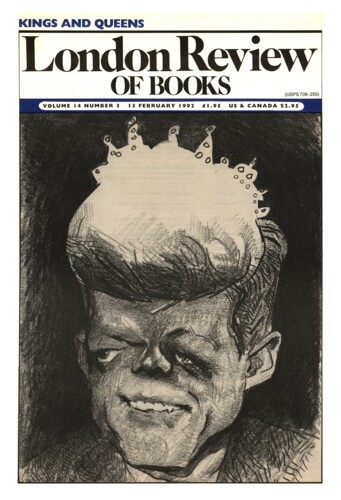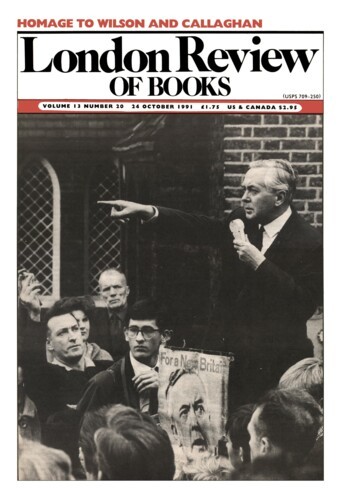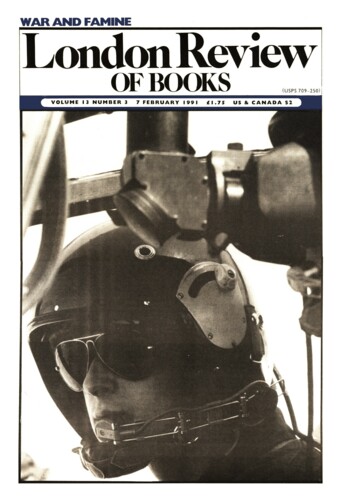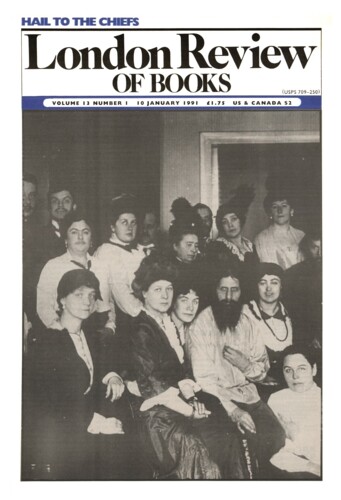Alma’s Alter
Gabriele Annan, 11 June 1992
This book is beautifully designed and printed, and very well translated by Mary Whittall. The English sometimes sounds a bit gnarled, but so does Kokoschka’s idiosyncratic German: not because Czech was his first language, though; his father was a German-speaking Czech from Prague, his mother Austrian; he was born in Lower Austria in 1886, grew up in a suburb of Vienna, and trained at the famous School of Arts and Crafts there. Whittall even manages the puns: in a letter of June 1930, for instance, Kokoschka jokingly compares his own indigence to that of Der arme Heinrich (‘Poor Heinrich’), the hero of a Medieval epic and a recent play by Gerhard Hauptmann. The passage ends er im Kreuzzug an leitender stelle (ich im Bummelzug von Gabes nach Reval). Literally this means: ‘he is a leading position in the crusades, I on a slow train from Gabes to Reval.’ Whittal renders it: ‘he in the vanguard of a crusade (I in the guard’s van from Gabes to Reval).’ She must have been pleased with that, and quite right too.
